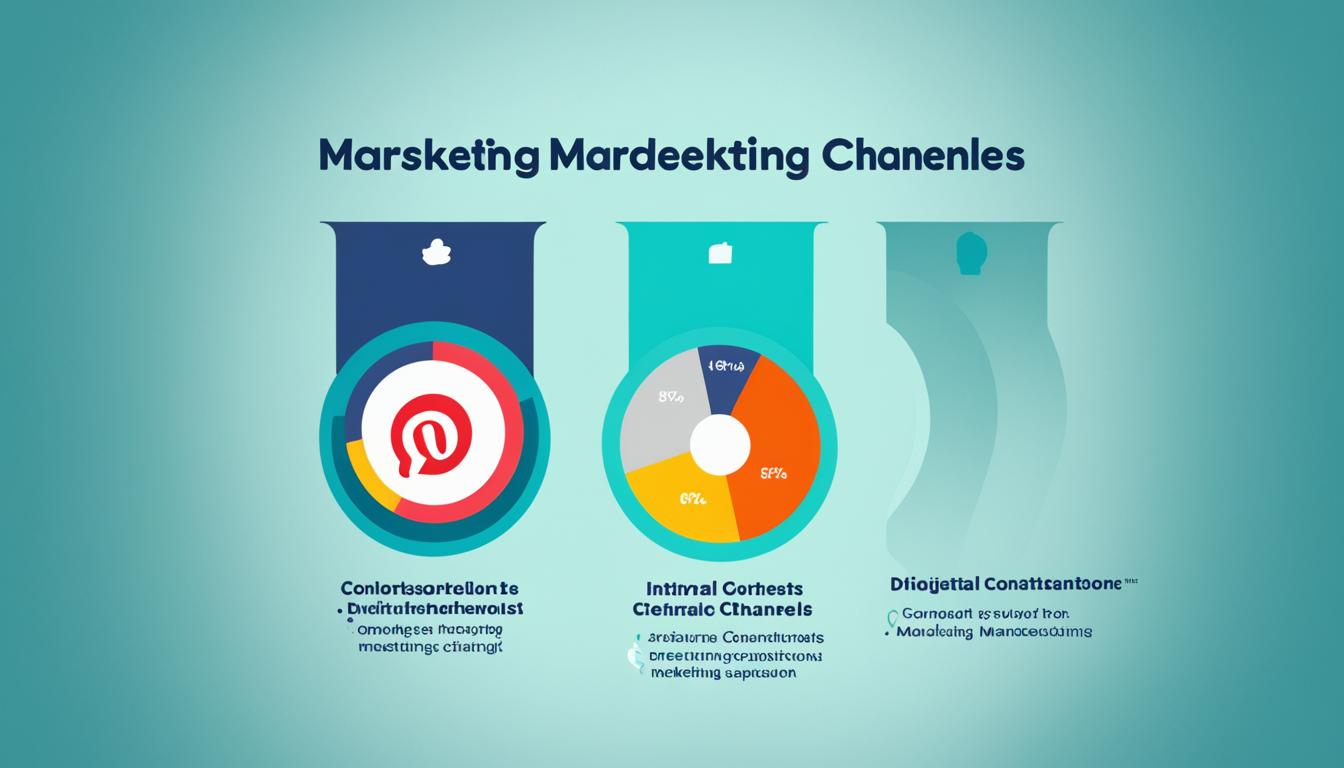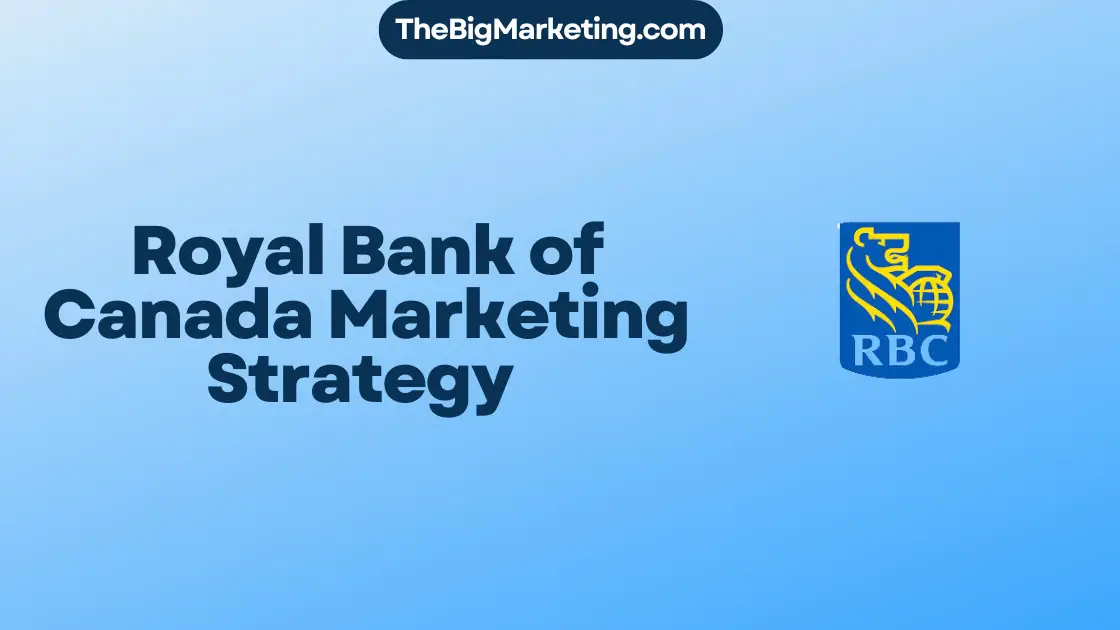Public relations (PR) is a crucial component of marketing that focuses on managing communication and reputation to promote organizations effectively. It involves utilizing media channels to cultivate a positive public perception, build trust with customers, and shape the spread of information. While branding concentrates on visual elements, PR prioritizes communication, brand reputation, and crisis management. By defining how a company interacts with customers, partners, journalists, and the public, PR plays a vital role in establishing trust, which is a fundamental requirement for success in today’s business landscape.
Key Takeaways:
- Public relations (PR) is the practice of using media channels to promote an organization and cultivate a positive public perception.
- PR focuses on managing communication, brand reputation, and trust-building with customers, partners, journalists, and the public.
- PR is crucial for establishing trust, which is integral to the success of businesses in all industries.
- Unlike branding, PR emphasizes communication and reputation, rather than visual elements.
- PR plays a vital role in managing information, especially in times of crisis, and shaping the overall perception of an organization.
Why is Public Relations Important?
Public relations (PR) plays a crucial role in today’s market by helping organizations build brand reputation and foster strong customer relationships. Establishing trust is essential for businesses to thrive, as it directly impacts the perception and loyalty of customers.
According to the Pew Research Center, only 27% of U.S. adults trust the information they find on social media platforms. In contrast, 56% trust national news media, and 75% trust local news outlets. This stark contrast reveals the importance of PR in reaching target audiences through trusted media channels.
Effective public relations professionals are skilled storytellers who develop strategic communication plans to highlight their clients’ stories in front of their target audience. By leveraging trusted media outlets, PR professionals can effectively build brand reputation and establish credibility.
Building brand reputation is essential for long-term success. A strong brand reputation not only attracts new customers but also retains existing ones. Positive public perception helps businesses differentiate themselves from competitors and position themselves as trustworthy and reliable.
In addition to building brand reputation, PR plays a critical role in fostering customer relationships. By effectively communicating with customers and addressing their needs and concerns, PR helps establish a sense of trust and loyalty. Strong customer relationships lead to repeat business, positive word-of-mouth, and ultimately, increased sales and growth.
PR is not just about promoting products or services; it’s about building meaningful connections with customers. Through proactive communication and engagement, PR professionals create opportunities for customers to connect with the brand on a personal level. This fosters a sense of loyalty and advocacy, which are essential for long-term business success.
Overall, public relations is an integral part of any marketing strategy. It helps businesses build brand reputation, establish trust, and foster strong customer relationships. By leveraging the power of storytelling and targeted communication, PR professionals can ensure that their clients’ messages resonate with their audience and drive business growth.
What is a PR Strategy?
A PR strategy is a crucial component of a business’s overall marketing efforts. It involves creating, organizing, and measuring the effectiveness of public relations tactics over time. While marketing focuses on driving sales, PR focuses on communication, reputation management, and relationship-building. By developing an authentic PR strategy, businesses can effectively promote their brand, establish trust with their target audience, and enhance their overall reputation.
Creating a successful PR strategy begins with thorough research of internal and external brand factors. This includes analyzing previous media coverage, social media engagement, and understanding buyer personas. By understanding the current landscape, businesses can identify what has worked well in the past and what factors may impact their brand’s reputation moving forward.
Once research is complete, outlining clear goals for each PR campaign is essential. These goals should include the target audience, key messages, and specific metrics to track success. Additionally, businesses should create a timeline for their PR campaigns, taking into account industry dates and public holidays to ensure effective timing and relevancy.
Selecting the right PR tactics is another important aspect of building a successful strategy. This may include media relations, social media marketing, influencer relations, thought leadership, and more. Each tactic should align with the overall PR strategy and support the goals and objectives outlined.
It is equally important to track and measure the results of PR campaigns. By aligning PR metrics with business goals, organizations can assess the effectiveness of their tactics and make informed decisions moving forward. Tracking results allows for continuous improvement and optimization of future PR strategies.
A comprehensive PR strategy should also consider the three types of media: owned, paid, and earned. Owned media refers to content that the business controls, such as social media posts, blog content, and website copy. Paid media involves promoting content through paid advertising, influencer marketing, and PPC campaigns. Lastly, earned media, such as media mentions and high search engine rankings, is obtained through organic means and carries significant credibility.
By developing and implementing a well-researched PR strategy, businesses can effectively leverage PR tactics to build brand awareness, cultivate a positive reputation, and foster strong relationships with their target audience. A strategic approach to PR is essential in today’s competitive market and can significantly contribute to a business’s overall success.
How to Build a PR Strategy
Developing a strong PR strategy is crucial for effectively promoting your organization and managing its reputation. By following a systematic approach that incorporates research, goal-setting, timeline creation, tactical selection, and tracking of results, you can create a PR strategy that aligns with your business objectives and resonates with your target audience.
Research
Begin by conducting thorough research into both internal and external brand factors. Examine previous media mentions, social media engagement, and buyer personas to gain insights into your organization’s current position and target audience preferences. Analyze what has worked well in the past and identify any external factors that could impact your brand’s reputation.
Goal Setting
Outline clear and measurable goals for each PR campaign. Define your target audience, determine the key messages you want to convey, and establish metrics to track the success of your efforts. Setting specific and achievable goals will help you stay focused and evaluate the effectiveness of your PR strategy.
Timeline
Create a detailed timeline for your PR initiatives, taking into account both short-term and long-term goals. Consider public holidays and industry events that may influence your strategy’s timing. A well-planned timeline ensures that your PR activities are strategically executed and aligned with key dates and milestones.
Tactics
Select the right PR tactics that align with your overall strategy and goals. This may include activities such as media relations, social media marketing, thought leadership, or community relations. Choose tactics that resonate with your target audience and maximize your chances of reaching your PR objectives.
Tracking Results
Determine how you will measure the outcomes of your PR efforts. Establish key performance indicators (KPIs) that align with your goals and track them regularly. This will allow you to evaluate the success of your strategy, make data-driven decisions, and refine your approach for future campaigns.
By following these steps, you can build a comprehensive PR strategy that leverages research, goal setting, timeline creation, tactical selection, and result tracking. This strategic approach will enable you to effectively communicate your brand message, enhance your reputation, and achieve your PR objectives.
Owned vs. Paid vs. Earned Media
When developing a comprehensive PR strategy, it is crucial to incorporate a combination of owned, paid, and earned media. Each media type offers unique advantages and can contribute to the overall success of your PR campaigns.
Owned media allows your business to have complete control over the content that is distributed. This includes social media posts, blog content, and website copy. With owned media, you have the freedom to shape your brand’s messaging and engage directly with your target audience.
Paid media involves promoting your content through various advertising channels, influencer marketing partnerships, and pay-per-click (PPC) campaigns. By investing in paid media, you can increase the reach and visibility of your PR efforts, ensuring that your key messages reach a wider audience.
Earned media is the most challenging to obtain but offers the most credibility. It refers to media coverage that is earned through positive mentions in industry news, customer praise on social media, and high rankings on search engines. Earned media acts as a validation of your brand’s reputation, building trust and credibility among your target audience.
Comparing PR Media Types
| Media Type | Definition | Advantages |
|---|---|---|
| Owned Media | Content that your business controls, such as social media posts, blog content, and website copy. |
|
| Paid Media | Promotion of content through advertising, influencer marketing, and pay-per-click (PPC) campaigns. |
|
| Earned Media | Mentions in industry news, customer praise on social media, and high search engine rankings. |
|
Public Relations vs. Marketing
Public relations (PR) and marketing may share similar actions and tactics, but they have distinct goals and functions within an organization. PR primarily focuses on enhancing a brand’s reputation and establishing trust, while marketing is primarily concerned with driving sales and revenue. PR indirectly promotes products or services through media coverage, while marketing campaigns directly aim to generate sales.
While PR and marketing have different objectives, they are both vital for building a strong brand presence. PR efforts help create awareness and trust among consumers, contributing to the overall success of marketing initiatives. By establishing credibility and positive brand perception, PR supports marketing efforts by increasing customer confidence and willingness to engage with the brand.
It is important to emphasize the synergy between PR and marketing for optimal results. While PR enhances brand reputation and awareness, marketing activities drive customer acquisition and sales. By harmonizing the efforts of PR and marketing, organizations can leverage their combined strengths to create a cohesive and impactful brand strategy.
PR Impact on Sales
Although PR does not directly drive sales, it significantly impacts an organization’s sales performance in the long run. Effective PR initiatives contribute to brand credibility, customer loyalty, and positive consumer sentiment, all of which ultimately influence purchasing decisions. Through media coverage and other PR tactics, businesses can increase customer trust, leading to higher sales conversions and repeat purchases.
The Synergy between PR and Marketing
The synergy between PR and marketing is crucial for achieving comprehensive brand success. When PR strategies align with marketing campaigns, they reinforce the brand message, increase brand recognition, and amplify the overall impact on the target audience. By combining PR’s focus on reputation and trust-building with marketing’s focus on driving revenue, organizations can create a cohesive brand narrative that resonates with consumers and drives sustainable growth.
The image above highlights the synergy between PR and marketing, illustrating how their combined efforts lead to enhanced brand visibility, increased customer reach, and improved sales performance.
PR Strategies and Tactics
Effective public relations (PR) involves the implementation of various strategies and tactics to promote organizations and manage their reputation. By employing these PR strategies, businesses can enhance their brand reputation, build relationships with the community, manage crises, and leverage media and social media platforms. Let’s explore some common PR strategies, tactics, and examples:
1. Business Events
Hosting and participating in industry events can help generate buzz and showcase your organization’s expertise. It provides a platform to network with industry professionals, connect with potential customers, and gain media coverage. Examples include trade shows, conferences, and product launches.
2. Community Relations
Building strong relationships with the local community is crucial for maintaining a positive brand image. This can be achieved through sponsorships, partnerships with nonprofits, and participating in community initiatives. Examples include organizing charity drives, volunteering, and supporting local schools or organizations.
3. Corporate and Social Responsibility
Embracing corporate social responsibility (CSR) initiatives helps organizations establish a positive reputation and contribute to society. Examples of CSR activities include environmental sustainability programs, charitable donations, and ethical business practices.
4. Crisis Management
Having a well-defined crisis management strategy is essential for handling unforeseen challenges effectively. This strategy involves proactive planning, clear communication, and swift action to protect your brand image during times of crisis. Examples include developing crisis communication plans, training spokespeople, and monitoring social media for potential PR crises.
5. Employee Relations
Engaging and involving employees in PR efforts can amplify your brand’s reach and credibility. Encouraging employee advocacy, providing internal communications platforms, and recognizing employee achievements are effective tactics. Examples include employee profiles in company newsletters, encouraging employee-generated content, and organizing team-building events.
6. Influencer Relations
Collaborating with influencers can help increase brand visibility and reach the target audience effectively. Seeking influencers who align with your brand values and have a substantial online following can yield successful PR campaigns. Examples include engaging influencers for product endorsements, brand partnerships, and influencer-hosted events.
7. Media Relations
Building strong relationships with journalists and media outlets helps in securing press coverage and spreading your brand’s message effectively. This encompasses activities like writing press releases, organizing press conferences, and providing expert commentary on relevant industry topics.
8. Social Media Marketing
Social media platforms offer an excellent opportunity for organizations to engage with their audience directly. Implementing a robust social media strategy can amplify brand messaging, facilitate customer interaction, and showcase brand personality. Examples include creating engaging content, leveraging popular hashtags, and responding to customer inquiries promptly.
9. Thought Leadership
Establishing your organization and key personnel as industry thought leaders can enhance credibility and generate media interest. This involves sharing valuable insights through blog posts, whitepapers, public speaking engagements, and participating in industry forums. Examples include writing guest articles for industry publications, hosting webinars, and speaking at conferences.
By incorporating these PR strategies and tactics into your overall communication plan, you can effectively promote your organization, manage your reputation, and achieve your business goals. Tailor these strategies based on your target audience, industry, and specific objectives, constantly monitor their effectiveness, and make adjustments as needed.
Can Social Media Replace Traditional Media?
Social media has revolutionized the way we communicate and consume information. It has become an integral part of public relations (PR) strategies, providing a platform for businesses to engage with their target audience and amplify their messages. However, while social media can augment PR efforts, it cannot completely replace traditional media.
Traditional media, including newspapers, magazines, and TV stations, hold a level of credibility and authority that social media platforms cannot match. These trusted sources of information are often seen as more reliable by the general public. When businesses are featured in traditional media outlets, it not only increases their visibility but also enhances their reputation.
On the other hand, social media offers unique advantages for PR practitioners. It allows for tailored messaging that can be adapted to different platforms and target audiences. Through social media, businesses can directly engage with their audience, respond to inquiries, and build relationships. Additionally, social media platforms provide access to data and analytics that can help measure the impact of PR campaigns.
However, it’s essential to recognize that social media content needs to be engaging and compelling to capture the attention of users. Boring or irrelevant content may not gain traction on social media platforms, diminishing the impact of PR efforts.
PR practitioners should focus on creating exciting and humanized content that resonates with their target audience across various social media platforms. This can include interactive posts, behind-the-scenes glimpses, user-generated content, and storytelling that reflects the brand’s values and personality.
Comparing Traditional Media and Social Media in PR
| Traditional Media | Social Media |
|---|---|
| Provides credibility and authority | Allows for direct engagement with the audience |
| Reaches a broad audience | Offers targeted messaging to specific demographics |
| Longer lead times for publication | Immediate dissemination of information |
| Requires media relations for coverage | Direct control over content and messaging |
| Offers in-depth analysis and storytelling | Provides real-time data and analytics |
By strategically harnessing the power of both traditional media and social media, PR practitioners can maximize their reach and impact. Traditional media outlets can help establish credibility and reach a wider audience, while social media platforms facilitate direct engagement and provide valuable data for measuring success. Integrating both mediums in a well-rounded PR strategy enables businesses to effectively manage their reputation, build relationships, and cultivate a positive brand image.
What is News?
Understanding the nature of news is crucial for effective PR strategies. News can be made in two ways: by creating a story or by following a story.
Creating a story involves storytelling and promoting something fresh such as a new product, market, CEO, or business plan. This can be accomplished through various channels like press releases, social media, content marketing, and speaking engagements. By crafting a compelling narrative, businesses can generate interest and capture the attention of their target audience.
On the other hand, following a story involves responding to news events, trends, or breaking news by providing expert commentary or insights. By leveraging their expertise, PR practitioners can position themselves as thought leaders and contribute valuable perspectives to ongoing discussions.
Both methods of making news play a vital role in PR. Creating a story allows businesses to proactively shape their narrative and generate buzz, while following a story allows them to stay relevant, engage with current events, and capitalize on timely opportunities.
Creating and following newsworthy stories requires a deep understanding of the target audience, the media landscape, and the industry. It is important for PR practitioners to constantly stay informed, monitor news trends, and identify opportunities to contribute to the ongoing conversation.
By staying attuned to the news, PR professionals can strategically position their clients or organizations, effectively communicate key messages, and seize opportunities to build brand awareness, trust, and credibility.
Conclusion
Public relations (PR) plays a vital role in marketing by helping organizations build trust, manage their reputation, and cultivate positive relationships with their target audience. It is a strategic communication process that involves storytelling and persuasion. PR and marketing work together to drive brand awareness, engagement, and sales.
Building a successful PR strategy requires research, goal-setting, timeline creation, tactical selection, and result tracking. By utilizing a combination of owned, paid, and earned media, organizations can execute effective PR campaigns that resonate with their audience and deliver measurable results.
In today’s competitive market, customers value trust and authenticity. PR enables businesses to establish credibility and connect with their target audience on a deeper level. By consistently implementing strategic PR initiatives, organizations can enhance their brand reputation, foster customer relationships, and ultimately drive growth and success in the marketplace.





